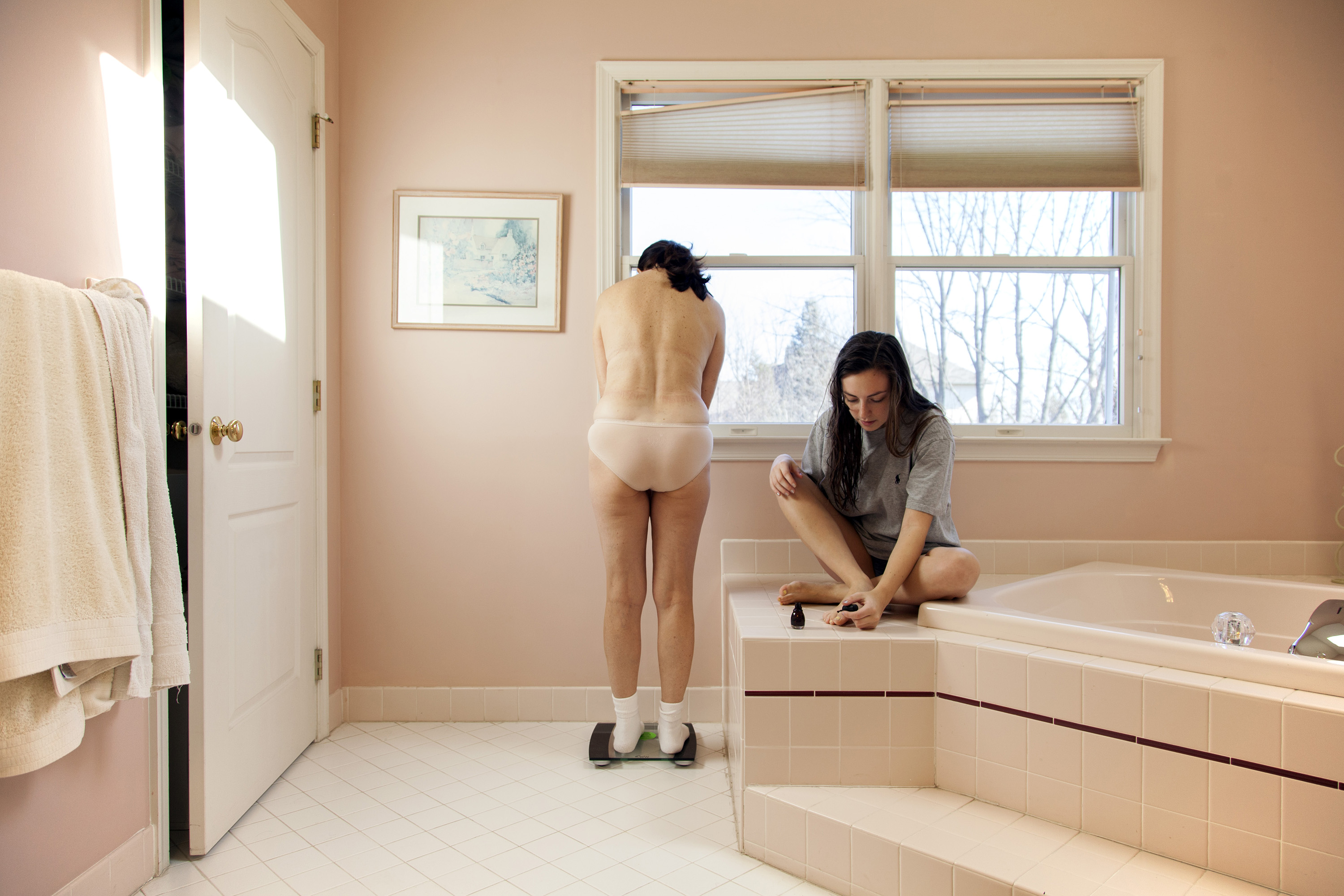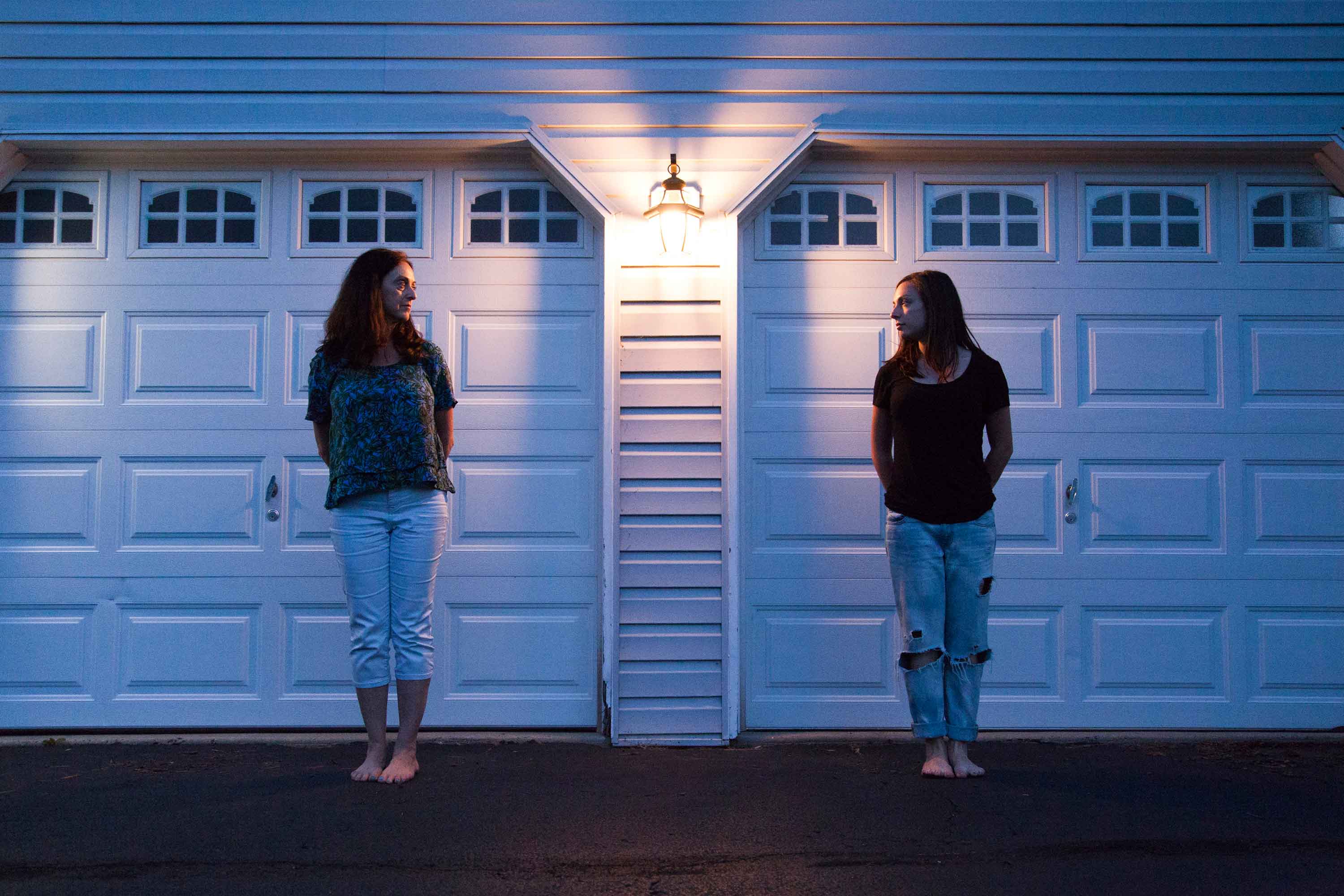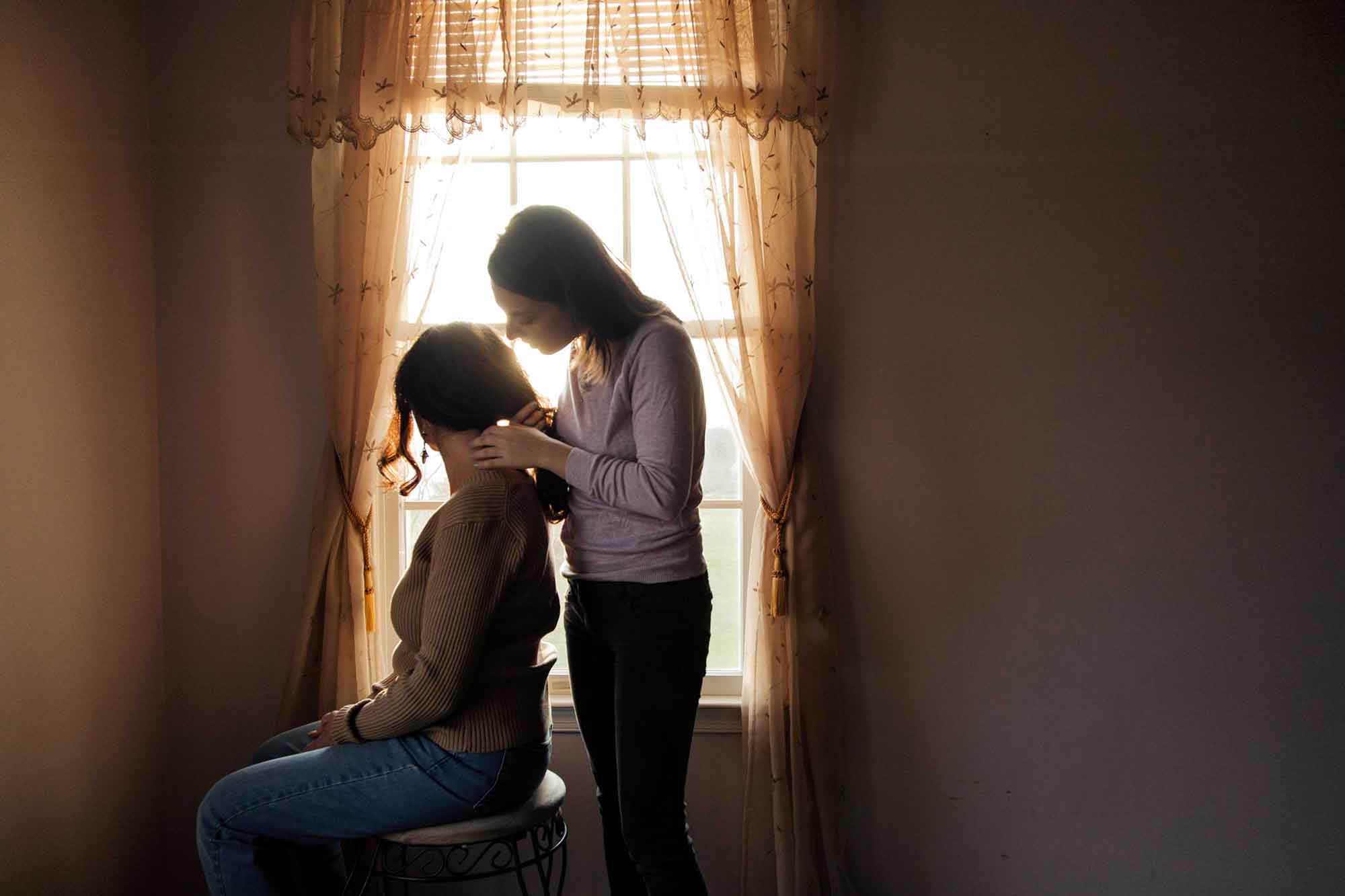
Three years into photographing my relationship with my mother, a project that manifested in a series of self-portraits with her, we found ourselves weary in her childhood home while my grandmother-my mother’s mother-lay dying in hospice care in the next room. When the matriarch of my small family was told she was not going to get better, she made her decision to be taken off of all life support, and came home to be surrounded by her family, her Jewish relics, her crooked painting collection climbing up the walls. I could hear memories humming in the rooms of the house, gentle white noise that grew more distinct when I focused hard and looked it in the eyes. My mom and I were sitting in her sister’s childhood bedroom, now littered with hoarded paper, exhausted. It was the middle of a long week. It had been overcast for days, so grey we kept the lights on all day. With my mom laying on her sister’s bed, an undeniable place of past solace and secrets, I set my camera on a shelf across the room and hit the shutter.
The next week we sat Shiva. For a few days we left our door open for visitors and covered our mirrors; the house in mourning too heavy for locked doors and vanity. My grandma died just before the holidays, so for the next few weeks I fluttered aimlessly between the city and my parent’s house. My mom, who is often a textbook example of physical and social composure, had a panic attack in the car after Thanksgiving. She missed her mom and I missed mine. The next day I put on a full face of makeup; I used an eyeshadow palette she got me for Hanukkah and wandered around the house looking to show her why red pigment was having a moment. I found her getting out of the shower. With no makeup, I think she looks more like me. With makeup, I look more like her. We found some nice morning light by the window and I hit the shutter. I didn’t look at this image for a while. When I finally did it showed both of us, together but alone, staring straight into the camera with the same expression of courage; the look of trying to get ourselves together. I applaud both of us for that.

The In Her Childhood Home While Her Mother Lay Dying and Getting Yourself Together images are the most recent of a long-term project, Indoor Voices, that began in 2015 in an effort to document my relationship with my mother. These photographs create a discourse about using intimacy as an action instead of just a feeling. Often the photographs are reacting to important times in our lives, and I want to use the camera as a tool to demonstrate both the strength and vulnerability that stems from familial ties, especially between mother and daughter. We speak to each other, and to the viewer, through body language and engagement with our surrounding domestic environment. I’m fortunate that my parents still live in the house where I grew up. The same window light I used to make a photograph about communication, is the same windowsill where I would pull the blinds down, frustrated that my mom didn’t understand what I was too young to articulate. In the same faithful and protective way that my mother raised me, I feel now a responsibility to substantiate the lives we build through photographic imagery.
The photographs in this essay are selections from Indoor Voices, Hannah Altman’s documentation of the evolving relationship between her and her mother.
Through these images we navigate and emphasize our perception of ourselves and the life that happens outside of the frame as we age and solidify our identities as mothers, as daughters, as women responsible for themselves. It is impossible to make work about female and Jewish life without also thinking about the historic societal dismissal and lack of representation of these viewpoints, and utilizing that erasure as a driving motive to make the work. Through self-portraits, we are making our existence visible and giving ourselves a platform through which we can vocalize our experiences. With this work, we are building a testimony to the mundane, to the transformative, to our lives. The gravity of these moments, like white noise in an old home, are stronger because they are in focus.









Hannah Altman is a Jewish-American artist working in Pittsburgh, Pennsylvania. Using photographic-based media, her interdisciplinary practice explores domesticity, femininity, and the tools that perpetuate them. Her work offers a dialogue regarding societal structure, aiming to navigate the dependencies of body image, perception, and environment. Altman’s work has been internationally published on a multitude of digital platforms, ranging from Vanity Fair to BuzzFeed. She has been included in French, Russian, Indian, Italian, and Australian photography anthologies, and presented solo exhibitions in Pittsburgh, Philadelphia, and Los Angeles.
Storyboard was the award-winning online journal and forum for critical thinking and provocative conversations at Carnegie Museum of Art. From 2014 to 2021, Storyboard published articles, photo essays, interviews, and more, that spoke to a local, national, and international arts readership.